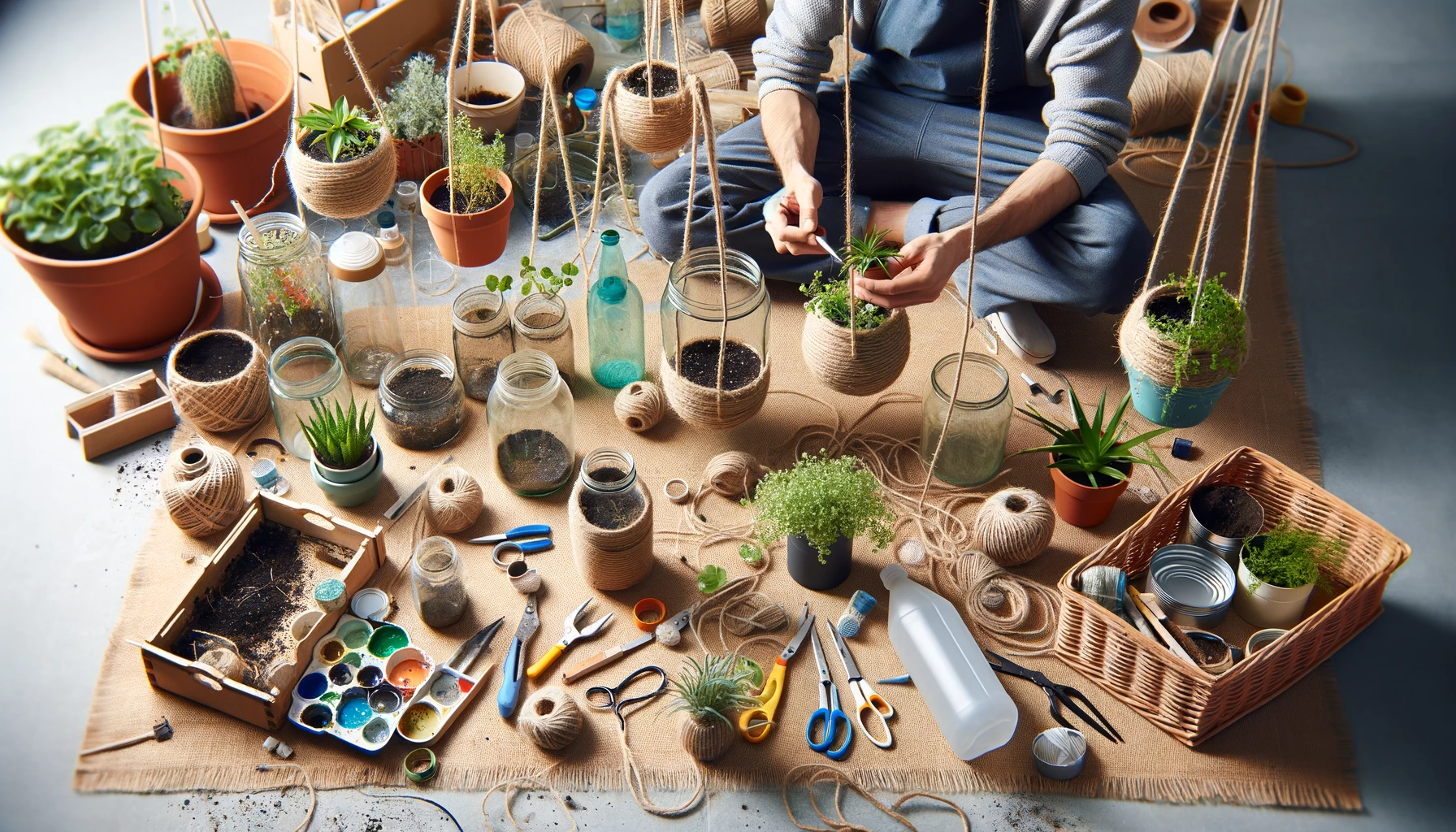DIY hanging planters offer a unique blend of functionality and aesthetic appeal, transforming the way we display and interact with plants in our living spaces. This innovative approach to gardening is not just about saving space; it’s about reimagining the potential of our environments, making them more vibrant, personalized, and alive. In this comprehensive guide, we will explore the steps, materials, and creative possibilities involved in crafting your own hanging planters. This project is perfect for individuals looking to add a touch of greenery to their homes in a stylish and space-efficient manner.
The Appeal of DIY Hanging Planters
The beauty of DIY hanging planters lies in their versatility and the opportunity they present for creative expression. They are particularly beneficial in small living spaces where ground and shelf space might be limited. By taking advantage of vertical space, hanging planters allow you to cultivate an indoor garden without sacrificing valuable floor area. Furthermore, this project encourages sustainability through the repurposing of materials, aligning with eco-friendly living principles.
Materials You’ll Need
To begin, you will need to gather a few basic supplies. The choice of materials can vary widely based on personal preference, the aesthetic theme of your space, and the types of plants you wish to display. Here’s a basic list to get you started:
- Containers: Look for old jars, plastic bottles, tin cans, or any other suitable containers that can be repurposed into planters. Ensure they are clean and devoid of any sharp edges for safety.
- Hanging Material: Rope, twine, chains, or even macramé cords can be used to hang your planters. The choice of material can significantly influence the overall look of your planter.
- Potting Soil: A high-quality potting mix suitable for the plants you choose to grow.
- Plants or Herbs: Select plants that thrive in the environmental conditions of your space. Succulents, ferns, and small trailing plants are excellent choices for their low maintenance and visual appeal.
- Drill: If your containers don’t already have drainage holes, you’ll need a drill to make some. This is crucial for the health of your plants.
- Decorations (Optional): Paint, stickers, or any other decorative elements to personalize your planters.
Step-by-Step Guide to Creating Your Hanging Planters
- Choosing Your Containers: The first step is to select the right containers. Recycled materials like mason jars, plastic bottles, and tin cans not only save money but also contribute to environmental sustainability.
- Preparing the Containers: If necessary, drill holes in the bottom for drainage to prevent waterlogging. This step is crucial for maintaining plant health. Feel free to paint or decorate your containers to match your personal style or the decor of the room where they will be displayed.
- Attaching the Hangers: Securely attach your chosen hanging material to the containers. For jars, tying around the neck might be the best approach, while for cans and bottles, punching holes and threading the material through could be more suitable. Ensure that the hangers are strong enough to support the weight of the planter, including the soil and plant.
- Planting: Fill your containers with potting soil and plant your selected herbs or plants. Be mindful of the plants’ light and water requirements when choosing their placement.
- Hanging Your Planters: Find the perfect spot for your hanging planters, considering the light requirements of the plants and the aesthetics of the space. They can be hung from ceiling hooks, wall mounts, or even from the underside of shelves.
- Caring for Your Planters: Regularly water your plants according to their needs, ensuring you don’t overwater them. Also, periodically check the hangers for wear and tear to maintain safety and stability.
Customizing Your Hanging Planters
One of the joys of DIY projects is the ability to customize your creations. Consider experimenting with different container sizes and shapes for a varied look. Adding a water feature, like a small self-watering system, can be a practical and visually appealing addition. Incorporating LED lights can also create a magical nighttime display.
Conclusion
DIY hanging planters are more than just a way to display plants; they are a reflection of creativity, a nod to sustainable living, and a practical solution for urban gardening. This project not only beautifies your space but also offers a sense of achievement and a connection to nature. Whether you’re an experienced gardener or new to the world of DIY, creating hanging planters is a rewarding endeavor that can be adapted and evolved to suit any space and style.
In crafting your hanging planters, you embark on a journey of creativity, transforming ordinary materials into extraordinary pieces of living art. The process is a testament to the idea that with a little imagination, we can reinvent our living spaces in ways that bring joy, beauty, and a bit of the natural world into our daily lives.



